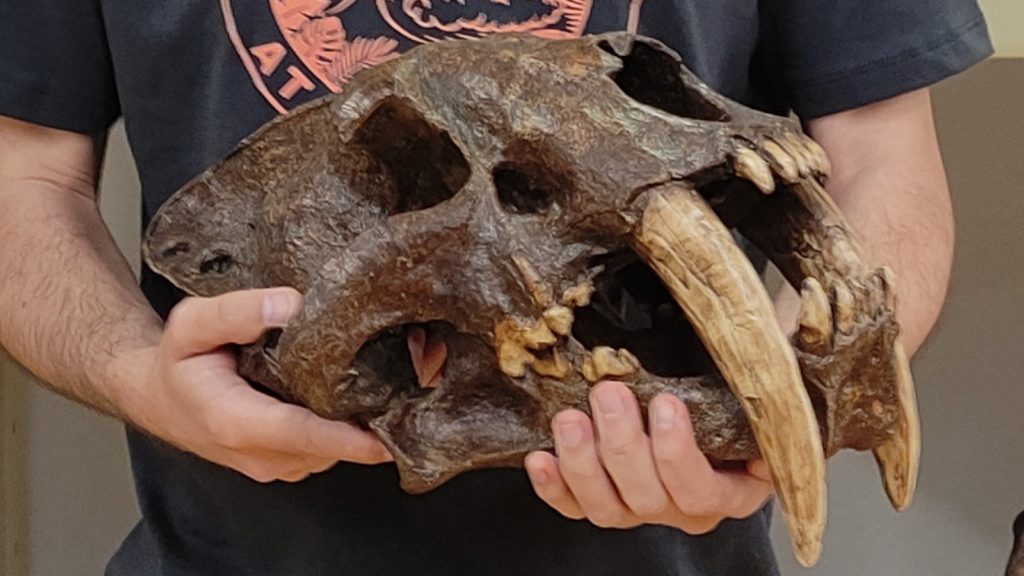
New species of saber-toothed cats, never seen before, have been found by scientists in South Africa. These ancient felines, which lived about 5.2 million years ago, were discovered near Langebaanweg, South Africa.
The two newfound species, Dinofelis werdelini and Lokotunjailurus chimsamyae, were found alongside the remains of two other known species, Adeilosmilus kabir and Yoshi obscura. All of them belong to a group of extinct feline predators called Machairodontinae, or “dagger-tooth” cats.
Findings of the study
In a study published in the journal iScience on July 20, researchers described the remains of all four species. They were already aware of D. werdelini from previous discoveries in Africa, Europe, North America, and China. However, they were surprised to find L. chimsamyae because it had only been seen in Kenya and Chad before.
This new information suggests that saber-toothed cats might have been more widespread than scientists previously thought.
In their study, the researchers examined the bones of the newly discovered species and compared them to those of known saber-toothed cats. This allowed them to create a new family tree for this group of extinct feline predators.
Surprisingly, the four species found in Langebaanweg were not closely related to each other, and they likely had different roles in their environment, even though they lived in the same area around the same time.
For instance, L. chinsamyae and A. kabir were larger and adapted for running at high speeds, which would have made them well-suited for open grassland areas. On the other hand, D. werdelini and Y. obscura were smaller and more agile, making them better adapted for covered environments like forests, according to the researchers.
Overlapping habitats of these species
The fact that these species overlapped in their habitats indicates that their environment comprised both forests and open grasslands. The researchers believe this could be due to a gradual shift in Africa’s climate, transforming the continent from a vast forested region into the dominant open grassland habitat we see today.
This change in ecosystem type is of particular interest because it occurred around the time when human ancestors, or hominins, first appeared in Africa.
After about a month of careful effort, a saber-toothed cat skull is ready to be returned to the Collections! Follow along to view each piece before and after—thread.
📷 Preparator Stevie Morley#SabertoothedSummer pic.twitter.com/HOGfkbHkWR
— La Brea Tar Pits (@labreatarpits) July 13, 2023
Understanding this shift better could provide insights into how and why hominins started walking on two legs. The researchers suggest that the alteration in the environment might have been a significant factor that influenced hominins to adopt bipedalism.
However, recent studies investigating ancient ecosystems in Africa have revealed that grasslands might have emerged as early as 21 million years ago. This discovery implies that the changes in ecosystems might not have directly impacted hominin bipedalism.
See all the latest news from Greece and the world at Greekreporter.com. Contact our newsroom to report an update or send your story, photos and videos. Follow GR on Google News and subscribe here to our daily email!



